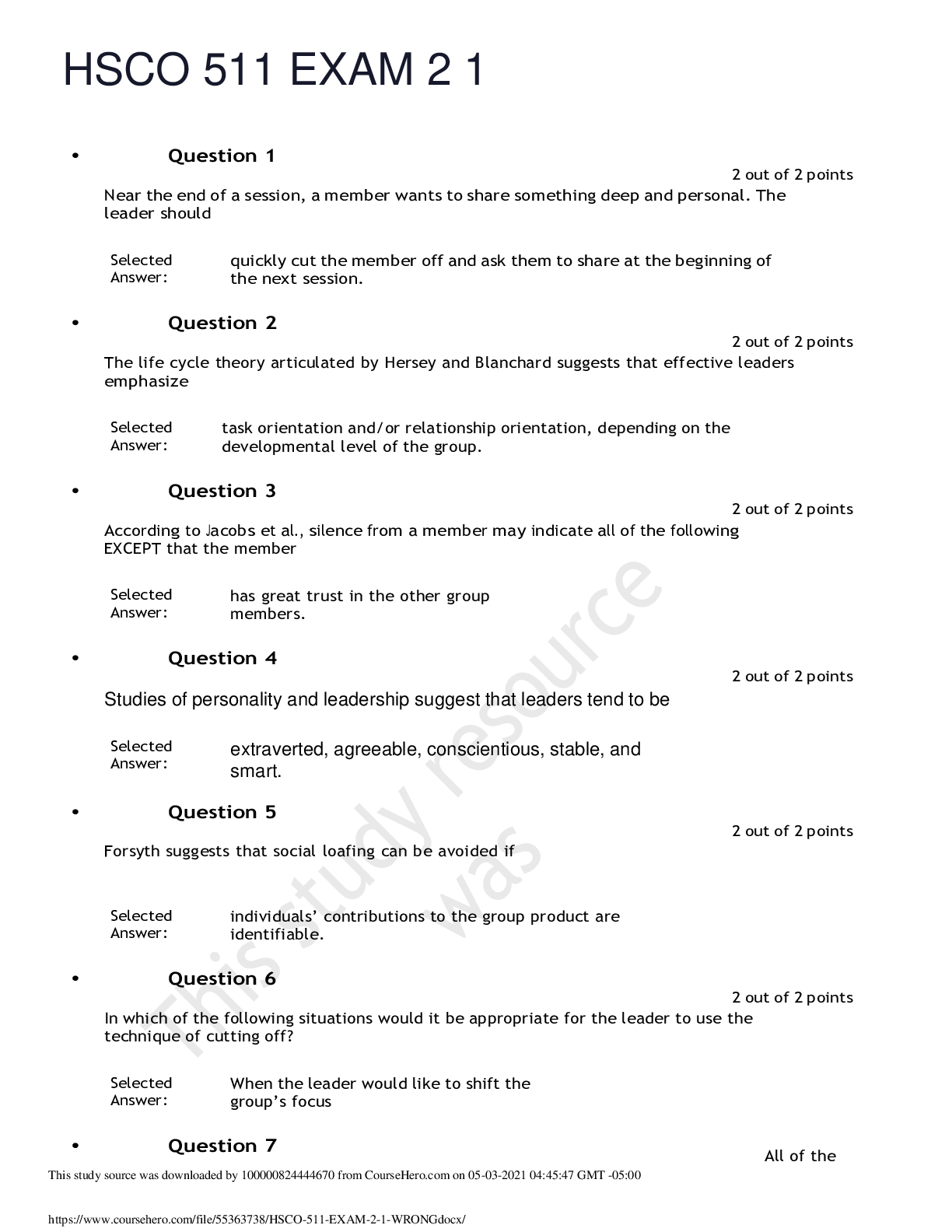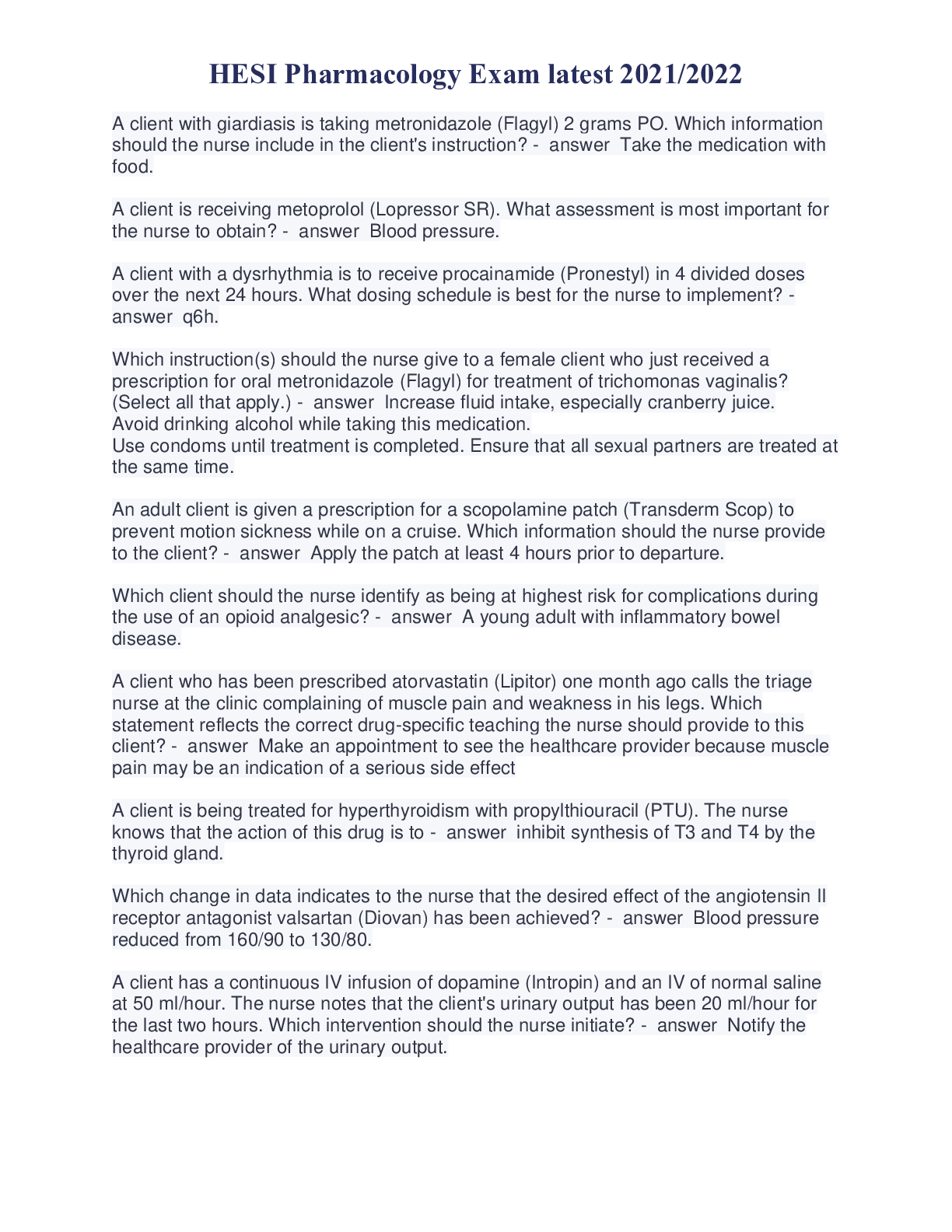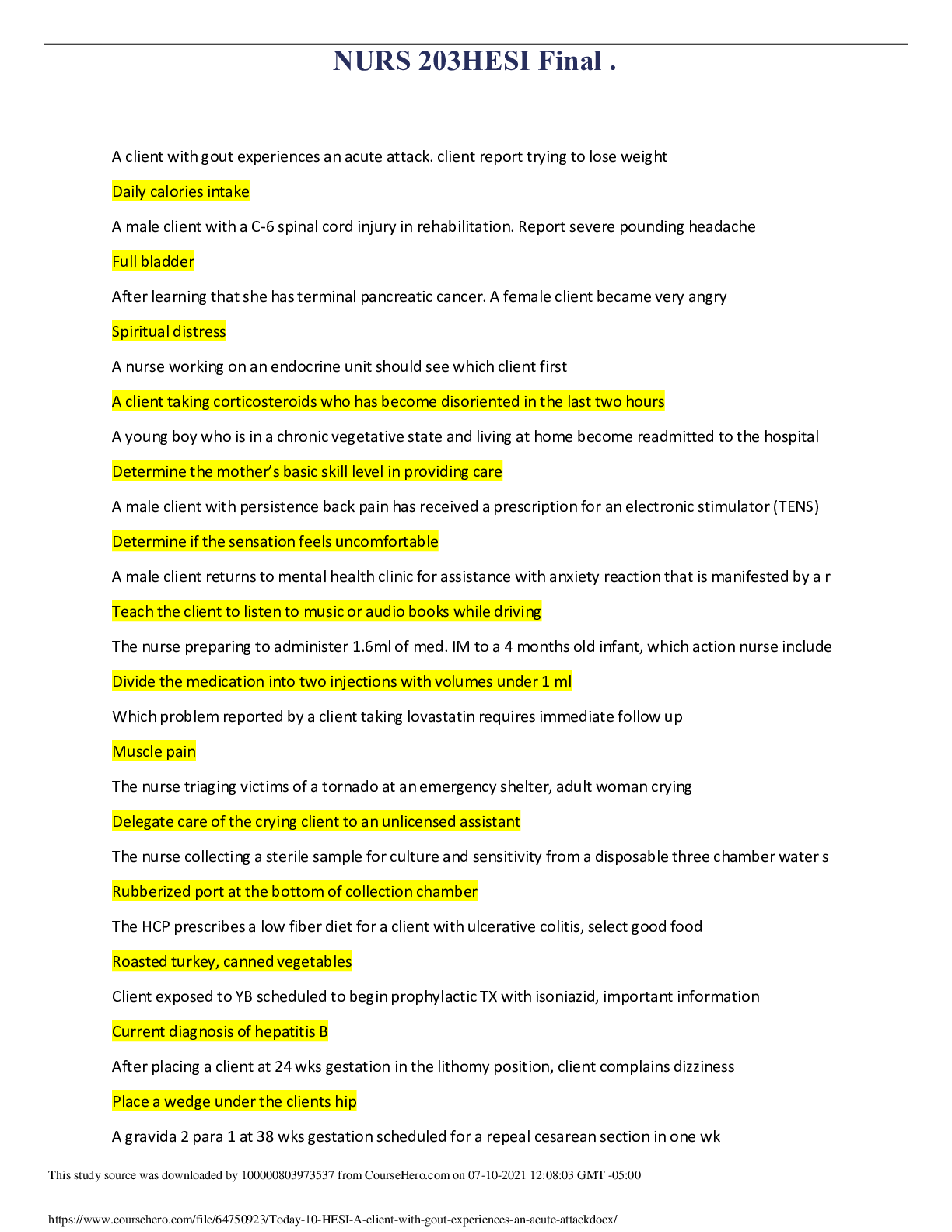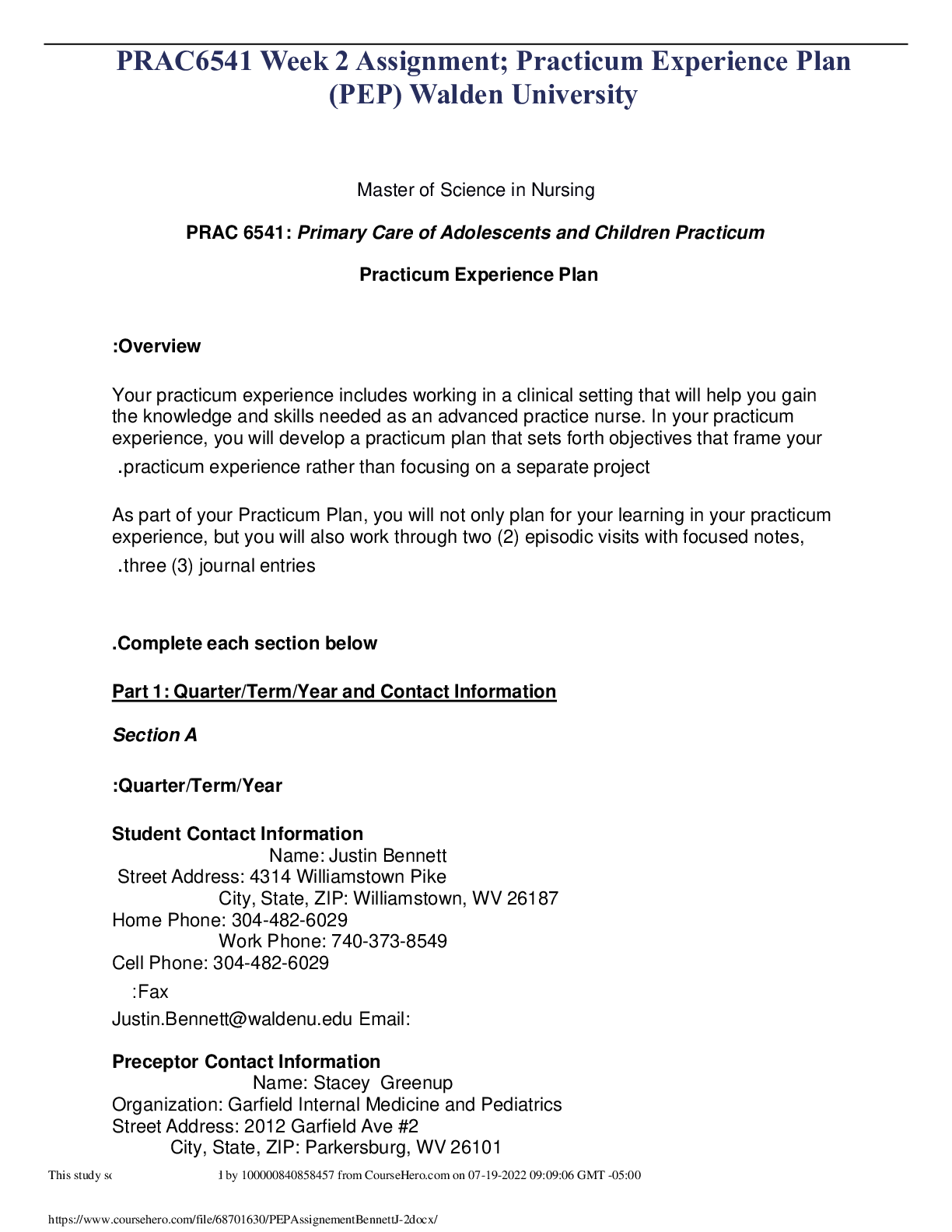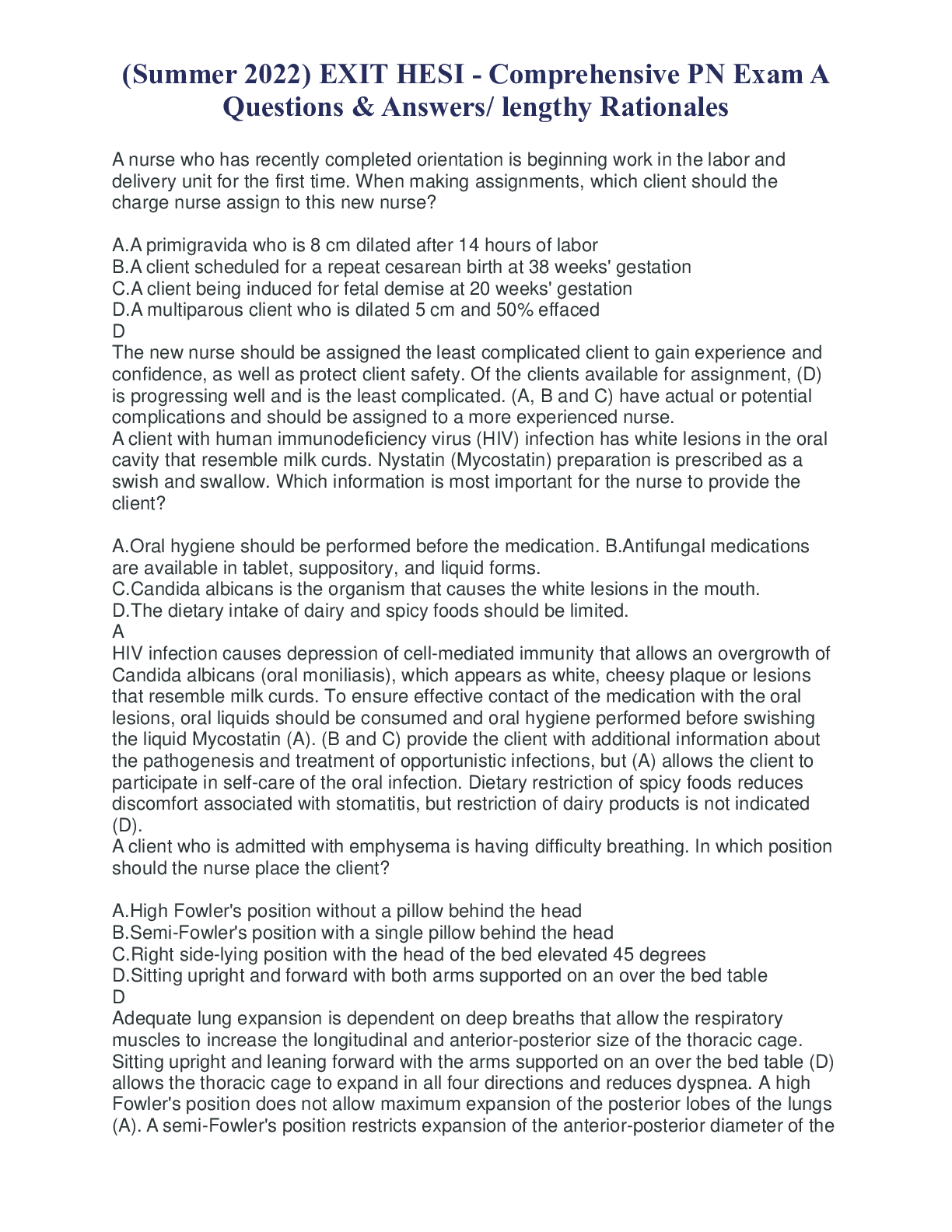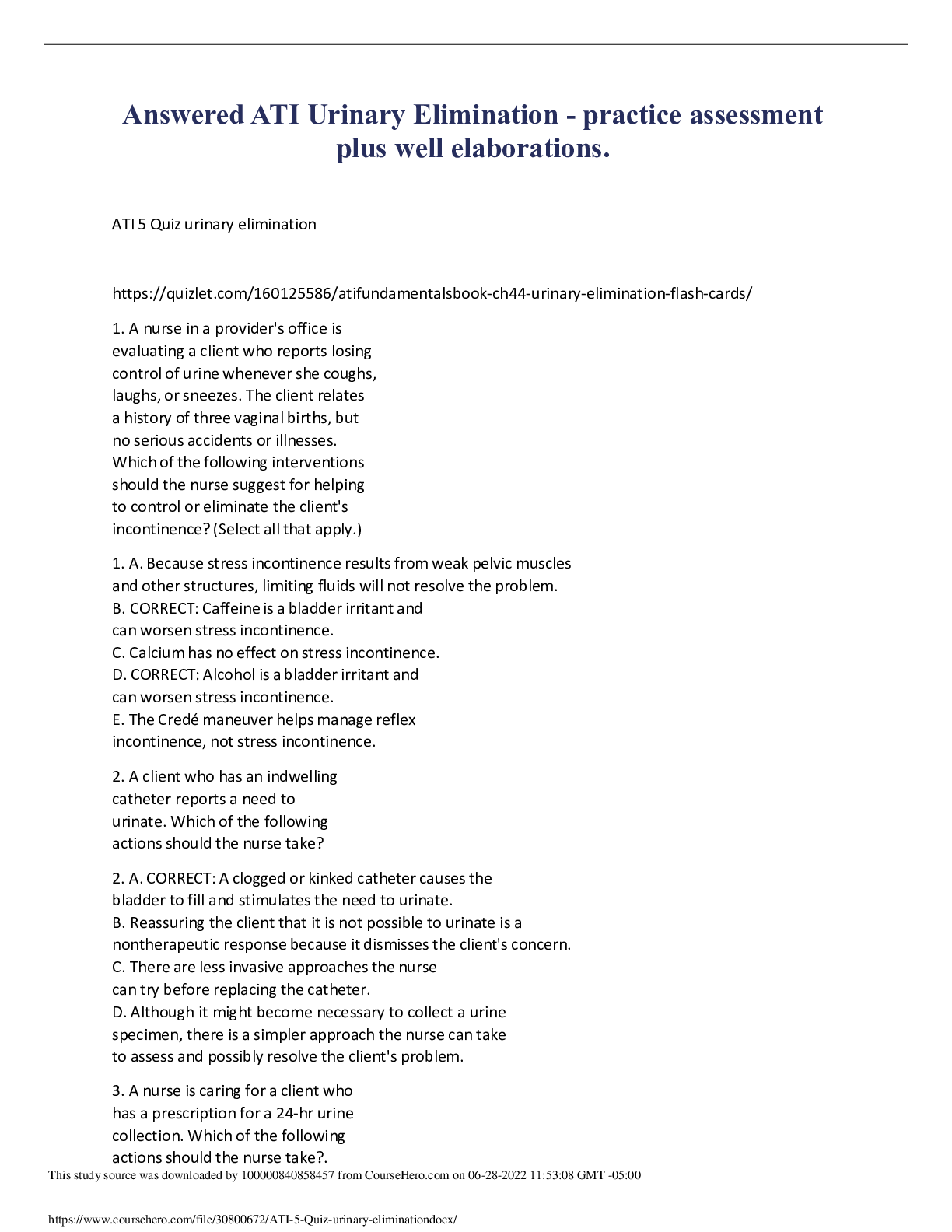EdithJacobson Discussion Activity,WELL EXPLAINED GRADED A.
Document Content and Description Below
Documentation Assignments 1. Document your focused musculoskeletal assessment of Edith Jacobson. My focused musculoskeletal assessment included visual inspection of Mrs. Jacobsons’ arms, hips, leg... s, and feet. She is weak and frail but is able to have full range of her upper extermities. Her strength was equal and strong for age appropriate in her bilateral upper extremities. It was noted that her left leg was shorter than her right, which is an appropriate finding for hip fractures. Strength and range of motion was not assessed on patients left leg or hip due to hip fracture. On the right leg range of motion and strength is appropriate for patient. Pulses are normal and present in all extremeites. No skin integreity noted. Unable to assess gait and weight bearing at this time. 2. Document your focused skin assessment of Edith Jacobson. During my focused skin assessment there were no significant findings at this time. Skin is normal in color, dry, clean, no swelling, no redness, no heat, no tenderness, no signs of dehydration, skin is elastic. No red areas or signs of skin integrity or break down at this time of assessment. 3. Document the patient teaching that Edith Jacobson would need related to fall risk and prevention during her hospitalization and upon discharge. The teaching provided to Mrs. Jacobson included risk for falls, necessity of asking for assistance for movement, and use of assistive devices. During the hospital stay staff will be able assist patient with turning in bed, getting out of bed to void, physical therapy, and assistive walking devices as patient progresses and tolerates. Make sure the area is clear of any potential fall or tripping hazards. Make sure it is well lit allowing the patient to see surroundings. If the patient is prone to getting up without asking for assistance, the use of bed alarms during hospital stay is appropriate. Upon discharge, it is important the patient is knowledge able and capable of using devices at home with confidence and unassisted. The patient and family or home health will need to evaluate and make sure the house is safe and appropriate for patient safety. Educate the patient on positioning to avoid pressure ulcers as well as avoid adduction or hip flexion during recovery. 4. Document the essential elements of proper body alignment for Edith Jacobson and include the specific supplies that would be needed. The essential elements of proper body alignment for Mrs. Jacobson include the use a post op hip wedge to prevent dislocations, adduction, and hip flexion. The patient should not cross their legs. It is important that the patient not rotate the foot, knee, or hip externally. The patient should not bend their hip any further than 90 degress to prevent hip flexion. When turning the patient on to their side, they should be turned to their unoperative side and supported with the use of pillows, you may need additional assistance and the use of sheets to effectively turn the patient. If the patient is required to be moved out of bed it is important to avoid low chairs and standard wheelchairs, unless the patient can perform correct strategies to avoid hip flexion in a standard wheelchair. Also positioning is important to prevent pressure ulcers. [Show More]
Last updated: 2 years ago
Preview 1 out of 1 pages
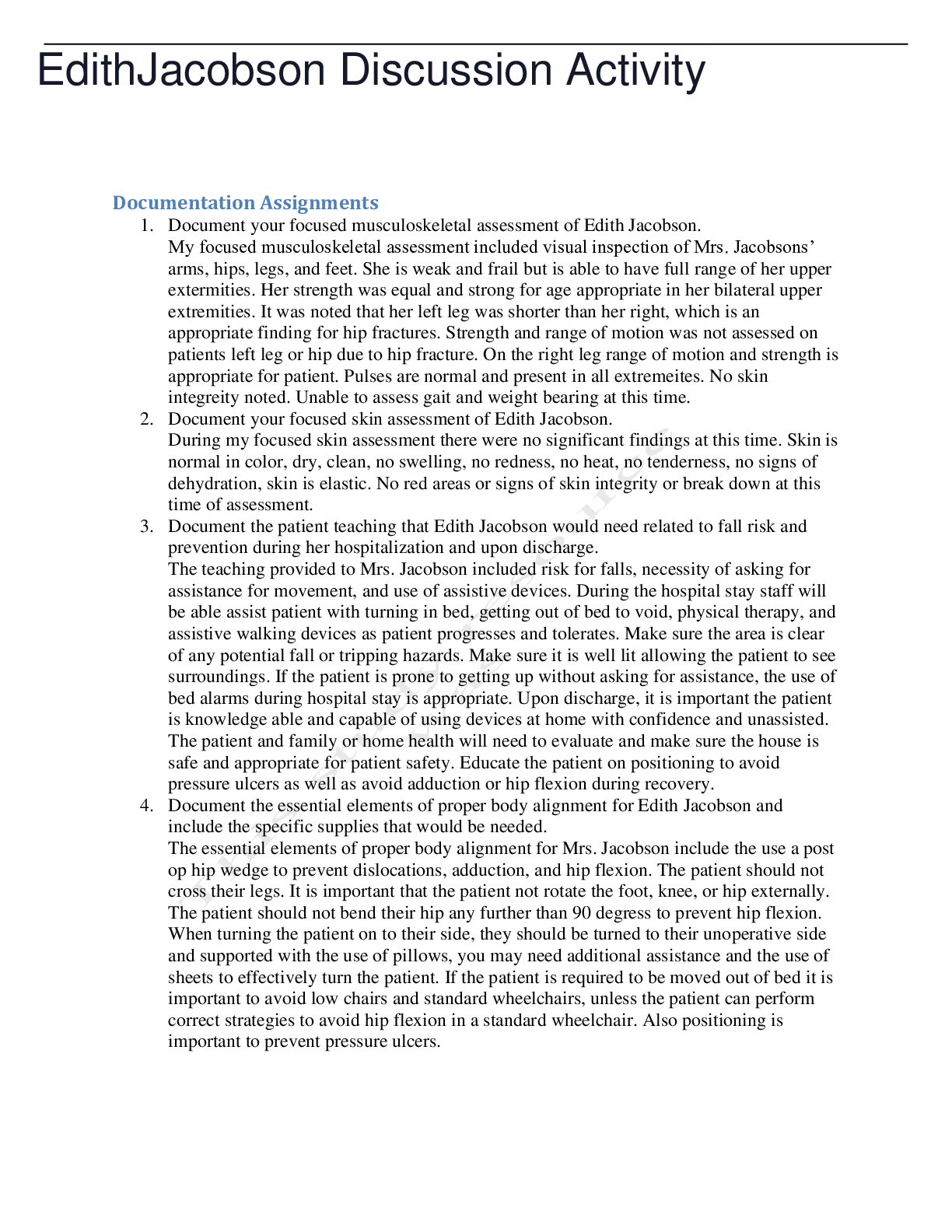
Buy this document to get the full access instantly
Instant Download Access after purchase
Buy NowInstant download
We Accept:

Reviews( 0 )
$13.00
Can't find what you want? Try our AI powered Search
Document information
Connected school, study & course
About the document
Uploaded On
May 07, 2021
Number of pages
1
Written in
Additional information
This document has been written for:
Uploaded
May 07, 2021
Downloads
0
Views
228


